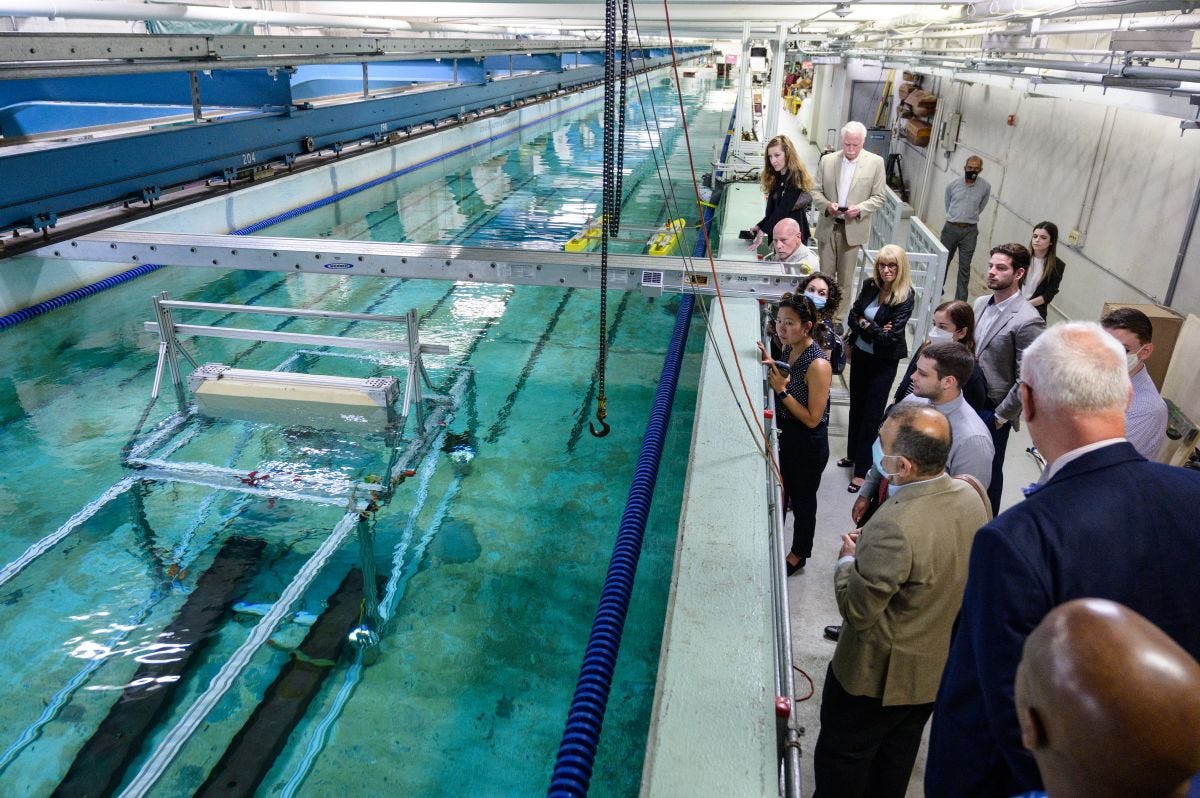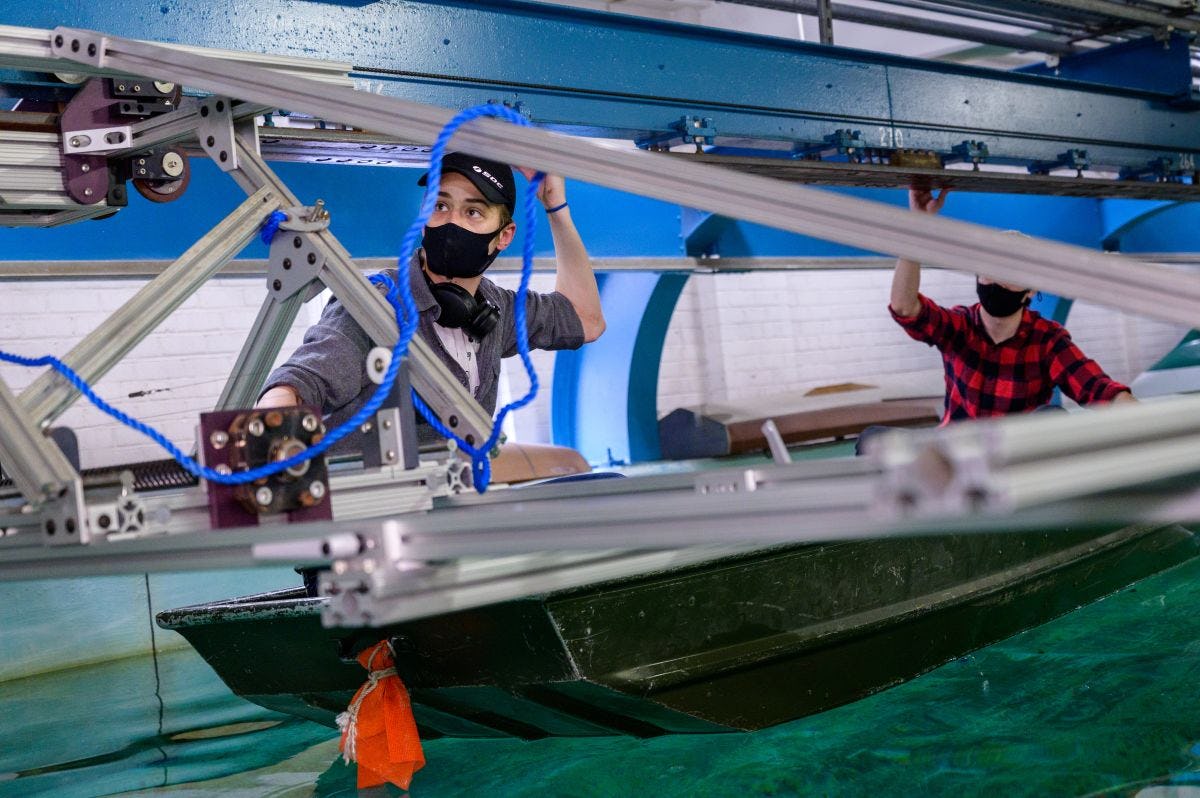Facilities & Centers
The Davidson Laboratory is available to Stevens faculty and corporate partners for a variety of uses and services.
The lab is also connected with a number of facilities and centers that provide a wide variety of research and prototyping capabilities, including the Stevens MakerCenter, a collaborative a design hub where students and researchers conceptualize and build prototypes to turn ideas into reality.
Other Affiliated Laboratories
Davidson Laboratory's research includes the work of seven additional units that conduct basic and applied research, often integrated into the Laboratory’s educational activities.
Coastal Engineering Research Laboratory
The Coastal Engineering Research Laboratory conducts high-resolution field investigations of shore protection projects including beach fill evolution, shoreline structure interaction, wave transformation, and sediment transport. Field research is supported by the Laboratory’s two research vessels and a jet ski based coastal bathymetric surveying system. In-situ wave and current measurements are obtained by the Center’s marine operations group which maintains and operates Acoustic Doppler Current Profilers, Water level gauges, wave meters, and acoustic Doppler velocimeters. Davidson Laboratory researchers frequently conduct bathymetric and topographic surveys using the specially designed DUCKS surveying system. DUCKS integrates traditional RTK GPS measurements with acoustic sounding information using a computer system mounted on the back of a jet ski. The versatile system allows measurement of the bathymetry in extremely shallow areas, and in places like the surfzone where traditional measurement approaches fail.
Marine Observation & Prediction Laboratory
The Marine Observation and Prediction Laboratory is addressing the many challenges facing estuarine and coastal communities – including natural and man-made hazards by improving our ability to detect, understand, predict, and respond to changes to the marine environment.
Information Systems Group
The Information Systems Group provides support and data storage for both real-world data acquisition and model forecasting, as well as for the generation of high-resolution model and real-time data images utilized in visualizations.
Integrated Spatial Modeling And Remote Sensing Technologies Laboratory (I-SMART)
The interdisciplinary team at I-SMART focuses their research on understanding various processes in land, atmosphere, and oceans and their interactions, as well as their impacts on urban communities, especially in the New York City metropolitan area. Researchers at I-SMART integrate remote sensing data, numerical models and in situ observations into the monitoring and decision-support systems they develop, leading to further tools and monitoring systems to support stakeholders and end-users in their decision-making processes.

